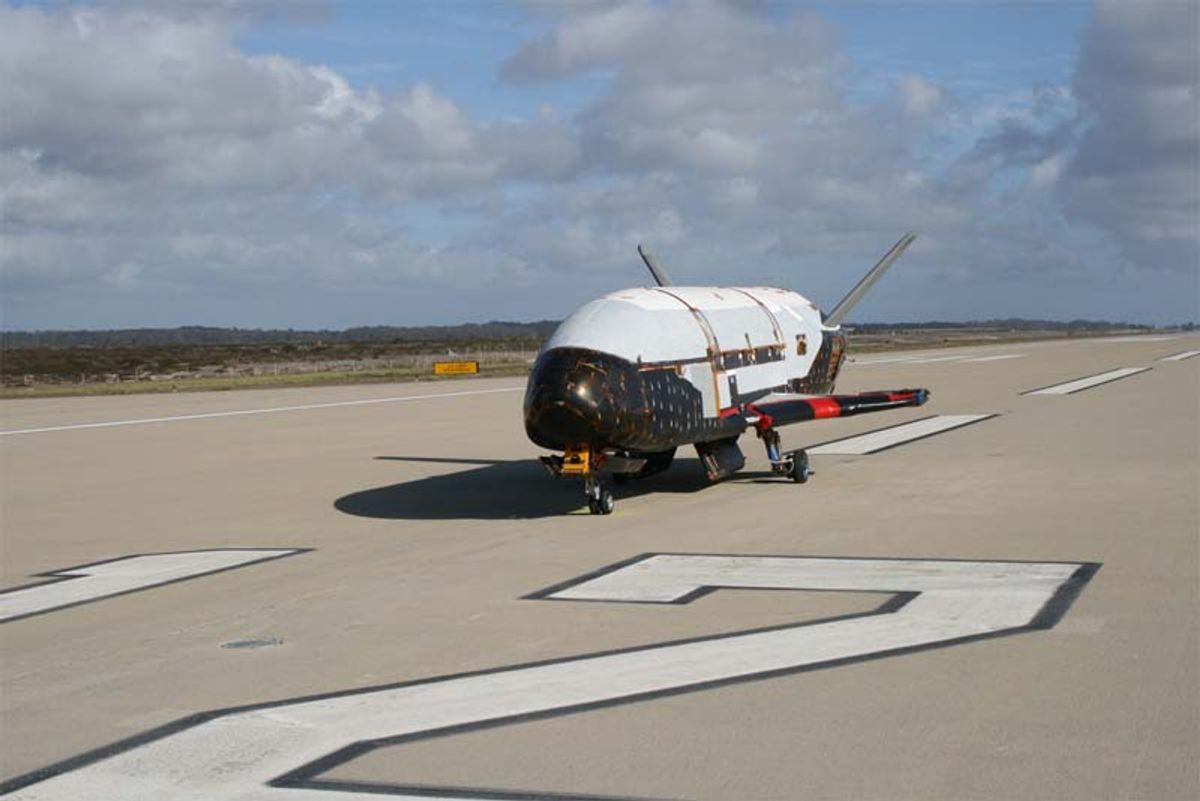In a development that has absolutely nothing to do with a mysterious vapor trail, an unmanned space plane designed by NASA researchers touched down at Vandenberg Air Force Base in California on 3 December after seven months in orbit. The 8.9-meter-long X-37B drone, which has a 4.5-meter wingspan, handled its controlled reentry and landing autonomously—a first for the U.S. space program.
Though much is known about the design of the craft because of its origins as a NASA project, the aims of the plane’s recent mission and details about how it was equipped for the flight are a tightly guarded secret because the U.S. Air Force launched it. Speculation over what the craft—which is powered by a solar array and lithium-ion batteries—was doing in orbit these past few months has abounded. Amateur satellite watchers say they tracked the X-37B as it changed its orbital path in ways similar to the maneuvers spy satellites perform when trying to capture a series of images of a specific area on the earth. Another educated guess is that the craft could have been inspecting other nations’ military satellites.
Despite the fact that a branch of the U.S. military launched the craft into orbit, the Air Force was quick to dismiss concerns about the weaponization of space. In April, when the X-37B was launched atop an Atlas 5 rocket, Gary Payton, the Air Force's deputy undersecretary for space programs, said the miniature Space Shuttle is “just an updated version of Space Shuttle type of activities in space."
One question: If the project is a continuation of what NASA has been doing for decades, why isn’t NASA doing it?
Payton added that, “We, the Air Force, have a suite of military missions in space and this new vehicle could potentially help us do those missions better.”
It’s possible that none of those military missions have anything to do with weapons, but just how remote are those chances?
Willie Jones is an associate editor at IEEE Spectrum. In addition to editing and planning daily coverage, he manages several of Spectrum's newsletters and contributes regularly to the monthly Big Picture section that appears in the print edition.



